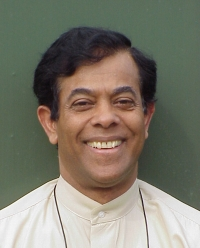Colloquia & Guest Speakers
How does a 50% beam combiner behave as a 0 to 100% reflector/transmitter inside an MZ interferometer?
Dr. ChandraSekhar Roychoudhuri, Physics Department, University of Connecticut
Monday, April 10, 2017
3:30 p.m.
Goergen 101
 Abstract
Abstract
It is easy to appreciate Glauber’s comment, “A photon is what a photodetector detects”, in the context of quantum detector that can absorb only a quantum cupful of energy dictated by the spacing between allowed quantum energy levels or energy bands. However, there are situations where the Superposition Effect takes place as energy re-direction from one beam to the other in the presence of simple classical bulk material, like partial mirrors (as beam splitters and beam combiners in interferometers), without the presence of any quantum detector. Classical electromagnetism easily explains this and we repeat such experiments routinely in labs. These situations do not require us to invoke postulates like, “indivisible light quanta”, or “a photon interferes only with itself”, or the need for the “absence of knowledge of which-way the photon travels”. I will present some simple experiments to explain that observable Superposition Effect (SE) can become manifest only due to superposition (simultaneous presence) of two or more optical beams either on a classical beam combiner, or on a quantum detector. This, in reality, is built into our basic math, presented for two-beam superposition, provided we explicitly incorporate the dipolar stimulations of the molecular complexes of the dielectric partial-mirror layer, whose field-induced polarizability is χ(ν):

This χ(ν) can also represent the linear dipolar polarizability of quantum detector complexes. Note that the energy re-distribution D(τ) arises out of a physical square modulus operation on the sum of two simultaneous dipolar stimulations of some material, not by the field amplitudes themselves. This is Non-Interaction of Waves (NIW)]. Let us also note that we do not yet have the technology to make a1 = a2 = a to the accuracy of a single photon of energy, hν = 6.63 × 10−20 J . Thus, we can never assume the accuracy of the last math line. It is, then obvious that a “detector” simultaneously accepts energy hν from both the beams a1 & a2 to fill up its quantum cup. Our highly successful basic math does not allow us to assume “single photon” interference; even if they exist! I will present videos of Mach-Zehnder experiments and data for Fabry-Perot experiments to strengthen my arguments. I will also underscore the deeper significance in physics of explicit recognition of Non-Interaction of Waves, neglected for centuries, also detailed in my book.
Bio:
Professor ChandraSekhar Roychoudhuri is now a “retired” full time Research Professor at the University of Connecticut (UConn); where he had joined in 1992 after 14 years of holding various research positions in industries (TRW, Perkin Elmer and United Technologies). Dr. Chandra has carried out a wide range of basic experiments on light-matter interaction processes over several decades and has re-discover Non-Interaction Waves (NIW), which we have been neglecting for centuries. He has recently published the book, “Causal Physics: Photon Model by Non-Interaction of Waves” [CRC, 2014]; which illustrates and re-evaluates most of the basic optical phenomena in light of the NIW-property. This NIW-property helps appreciates that Quantum Mechanics has much more reality built into its formalism than we have assumed so far – “wave particle duality” is not a required reality of nature. Chandra came to USA as a Fulbright Scholar and did his PhD from the Institute of Optics, University of Rochester.
Location:Goergen 101
Refreshments will be served.
